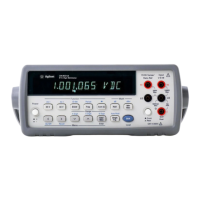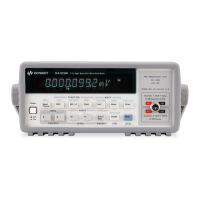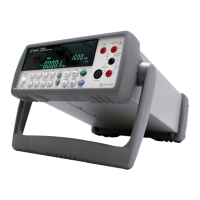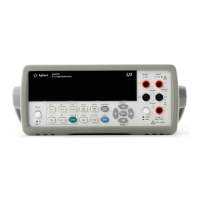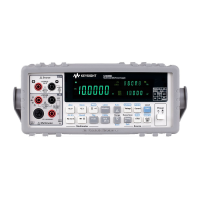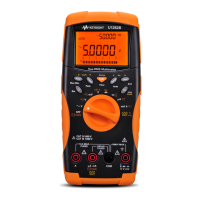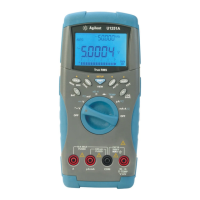Chapter 5 Digitizing 131
high-speed mode, the multimeter writes-over any sample still in the output
buffer when a new sample is available.) For more information, refer to "The
High-Speed Mode" in Chapter 4.
The Sampling Rate
The Nyquist or Sampling Theorem states:
If a continuous, bandwidth-limited signal contains no frequency
components higher than F, then the original signal can be recovered
without distortion (aliasing) if it is sampled at a rate that is greater than
2F samples per second.
In practice, the multimeter’s sampling rate must be at least twice the highest
frequency component of the signal being measured. The sampling rate is the
reciprocal of the time interval specified by the TIMER command or the
effective_interval specified by the SWEEP command. For example, assume
the effective_interval is specified as 20µs. The sampling rate is then 1/20µs
= 50,000 samples per second.
Figure 25 shows a sine wave sampled at a rate slightly less than 2F. As shown
by the dashed line, the result is an alias frequency which is much different
than the frequency of the signal being ueasured.
Some digitizers have a built-in anti-aliasing low-pass filter with a sharp cutoff
at a frequency equal to l/2 the digitizer’s sampling rate. This limits the
bandwidth of the input signal so that aliasing cannot occur. Since the
multimeter has a variable sample rate for DCV digitizing, and to preserve
the upper bandwidth for high-frequency measurements, no anti-aliasing filter
is provided in the multimeter. If you are concerned about aliasing, you should
add an external antialiasing filter.
Figure 25. Aliasing caused by undersampling
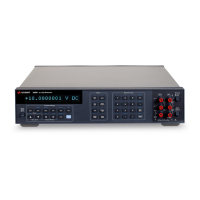
